
Aggregate demand has been booming as the world bounces back from the pandemic. At the same time, aggregate supply is severely constrained. These supply constraints are making potential national income smaller – at least temporarily. The result is that many countries are heading for recession.
At the same time, supply constraints are causing prices to rise, especially energy and food prices. This cost-push inflation is made worse by the rises in aggregate demand.
The result is ‘stagflation’ – a recession, or stagnation, accompanied by high inflation. In the UK, the latest Bank of England Monetary Policy Report forecast that by the end of 2022, CPI inflation would be 13.1% and that in 2023, real GDP would fall by 1.5%.
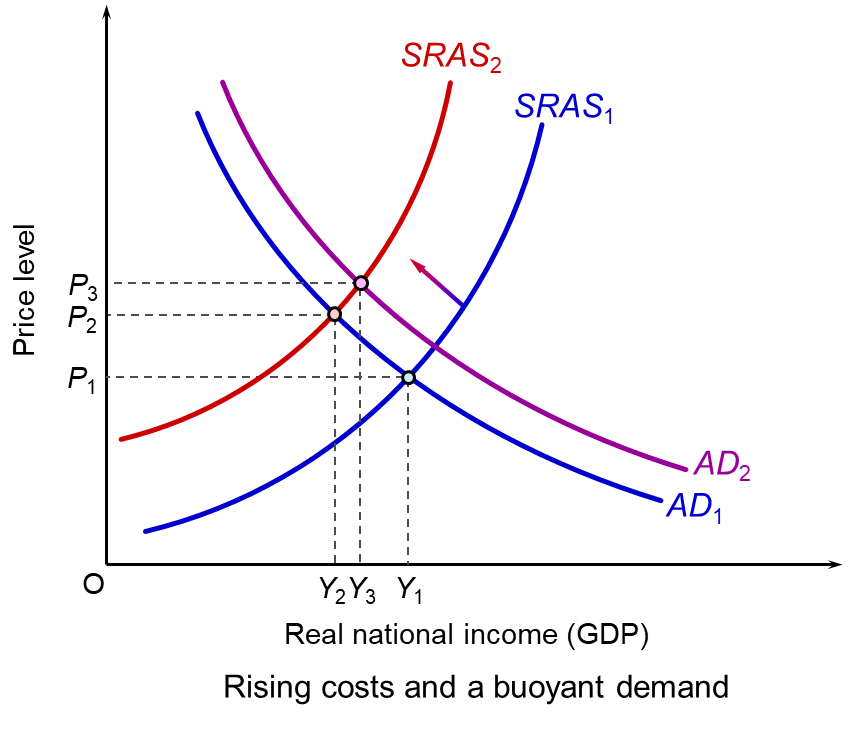 This effect of an adverse supply shock accompanied by relatively buoyant aggregate demand (at least initially) can be illustrated with an aggregate demand and supply diagram. The supply shock is illustrated by an upward shift to the left of the short-run aggregate supply curve (SRAS). (If the shock is a direct rise in prices, then it can be seen as a vertical upward shift. If it is a fall in the total amount supplied, then it can be seen as a horizontal leftward shift.) In the diagram, aggregate supply shifts from SRAS1 to SRAS2. The price level rises from P1 to P2. If costs go on rising or supply goes on falling then the curve will go on shifting upwards to the left.
This effect of an adverse supply shock accompanied by relatively buoyant aggregate demand (at least initially) can be illustrated with an aggregate demand and supply diagram. The supply shock is illustrated by an upward shift to the left of the short-run aggregate supply curve (SRAS). (If the shock is a direct rise in prices, then it can be seen as a vertical upward shift. If it is a fall in the total amount supplied, then it can be seen as a horizontal leftward shift.) In the diagram, aggregate supply shifts from SRAS1 to SRAS2. The price level rises from P1 to P2. If costs go on rising or supply goes on falling then the curve will go on shifting upwards to the left.
If the government responds by increasing benefits or reducing taxes, then, other things being
equal, aggregate demand will rise. In the diagram, the AD curve will shift to the right, e.g. from AD1 to AD2. Real GDP only falls to Y3 not Y2. However, the price level rises further: from P2 to P3.
Why has aggregate supply fallen?
There are several factors that have contributed to the fall in aggregate supply/rise in costs.
- Stretched supply chains, which had been adversely affected by Covid. Congestion at container ports has led to delays, with warehouses and shops being short of stock.
- Labour shortages, with many people not returning to the labour force after being laid off or furloughed, or only returning part time, leaving firms needing more people. The problem has been particularly acute in the UK, with many EU citizens having returned to the EU after Brexit and the UK having to rely increasingly on staff from outside the EU.
 The war in Ukraine. This has had a major impact on the supply of natural gas and oil. The war has also led to a fall in grain and other food supplies from Ukraine, as ports have been blockaded and there have been disruptions to planting and harvesting.
The war in Ukraine. This has had a major impact on the supply of natural gas and oil. The war has also led to a fall in grain and other food supplies from Ukraine, as ports have been blockaded and there have been disruptions to planting and harvesting.- Climate change is causing more severe weather events, such as droughts in Europe and western USA. The droughts of 2022 will compound the problem of food shortages and food price inflation.
- In the UK, Brexit costs, such as increased administrative burdens and difficulties in both exporting and importing, have dampened production and hence adversely impacted on aggregate supply.
- Increased industrial action. As the cost of living soars, unions are demanding pay increases to match the rise in the cost of living. Pay rises further increase firms’ costs – and the bigger the pay rises, the bigger the rise in costs.
The problem with a fall in aggregate supply is that it reduces real GDP. People as a whole are poorer. To use a common analogy, the national ‘pie’ has shrunk. Giving everyone a bigger knife and fork (i.e. a rise in nominal aggregate demand) will not make people better off. It just compounds the problem of rising prices, as the diagram shows.
In the short term, with GDP shrinking, there is a major issue of distribution. If the poor are to be given help so that they are not made even poorer, then other people will have been made worse off. In other words, their nominal incomes must rise more slowly than prices.
Monetary policy
 Central banks generally have a mandate of keeping inflation close to 2% over the medium term. Their levers are changes in interest rates, underpinned by changes in the money supply – in extreme times by quantitative easing (creating money by buying assets with newly created money) or quantitative tightening (withdrawing money from the economy by selling assets). Central banks, faced by soaring inflation, have been raising interest rates. The Fed has recently raised the Federal Funds rate by 0.75 percentage points (75 basis points) and the Bank of England and the European Central Bank by 0.5 percentage points (50 basis points).
Central banks generally have a mandate of keeping inflation close to 2% over the medium term. Their levers are changes in interest rates, underpinned by changes in the money supply – in extreme times by quantitative easing (creating money by buying assets with newly created money) or quantitative tightening (withdrawing money from the economy by selling assets). Central banks, faced by soaring inflation, have been raising interest rates. The Fed has recently raised the Federal Funds rate by 0.75 percentage points (75 basis points) and the Bank of England and the European Central Bank by 0.5 percentage points (50 basis points).
Raising interest rates reduces inflation by dampening aggregate demand. In the diagram, the AD curve shifts to the left (or shifts to the right less quickly). This will dampen inflation, as falling real demand will force firms to cut prices. But it will also force them to cut output and employment, thereby worsening the recession.
Central banks recognise this dilemma, but also recognise that if inflation is not brought rapidly under control, it could spiral upwards, with wages and prices chasing each other in a wage–price spiral, which only gets worse as inflationary expectations rise. The short-term pain of falling real income is a price worth paying for getting inflation under control.
Fiscal policy
In the short term, there is little that fiscal policy can do to raise real GDP. The focus, as it was during the pandemic, must therefore be in providing relief to those most in need.
In the UK, the energy price cap set by Ofgem will see likely energy bills for the typical household quadruple in just a year, from a little over £1000 per annum at January 2021 prices to over £4200 in predicted January 2023 prices. These higher prices partly reflect rising wholesale energy costs and partly the need for energy companies, in a process known as ‘backwardation’, to recoup hedging costs they have incurred so as not to be forced out of business.
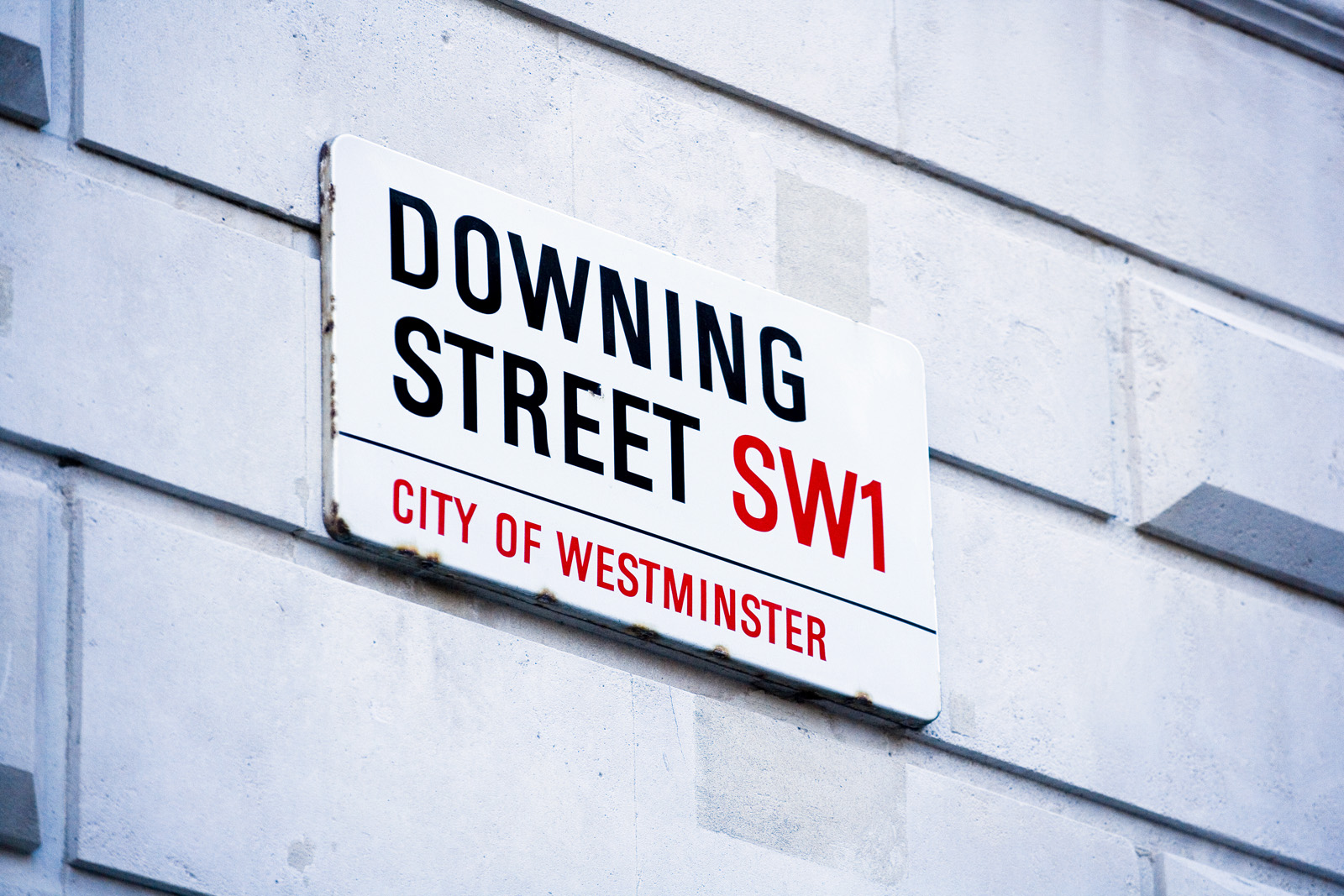 Relief for consumers can be in various forms. For example, the government could pay subsidies to energy suppliers to cap prices at a lower level, perhaps just for the poorest households. Or it could pay grants to help people with their bills. Again, these could be targeted to the poorest families, or paid on a sliding scale according to income. Or VAT on gas and electricity could be scrapped.
Relief for consumers can be in various forms. For example, the government could pay subsidies to energy suppliers to cap prices at a lower level, perhaps just for the poorest households. Or it could pay grants to help people with their bills. Again, these could be targeted to the poorest families, or paid on a sliding scale according to income. Or VAT on gas and electricity could be scrapped.
Generally the more people are entitled to help, the more expensive it is for the government and hence the less generous the help per family is likely to be.
Then there is the question of whether such measures should be accompanied by a rise in broadly-based tax, such as income tax, or whether the government should borrow more, which would be likely to push up interest rates and increase the cost of servicing government debt.
One topic of debate in the Conservative leadership contest is whether taxes should be cut to help people struggling with the cost of living. Whilst such a policy, if carefully targeted to investment, might increase aggregate supply over the longer term, in the short term it will increase aggregate demand and will add to inflationary pressures.
Targeting tax cuts to the poor is difficult. Cutting income tax rates has the opposite effect. The rich pay more income tax than the poor and will benefit most from a cut in rates. An alternative is to raise personal allowances. This will provide a bigger percentage help to income taxpayers on lower incomes, but provides no help at all for the poorest people who currently pay no income tax.
Conclusion
The supply shocks are making countries poorer. The focus in the short term, therefore, needs to be on income distribution and how to help those suffering the most.
To end on a note of optimism: the energy shocks are causing governments to invest in alternative sources, such as wind, solar and nuclear. When these come on line, it is expected that energy prices will fall.
As far as overall inflation is concerned, although the Bank of England is forecasting CPI inflation of 13.1% by Q4 2022, it is also forecasting that this will have fallen to 5.5% by Q4 2023 and to just 0.8% by Q3 2024. Fingers crossed.
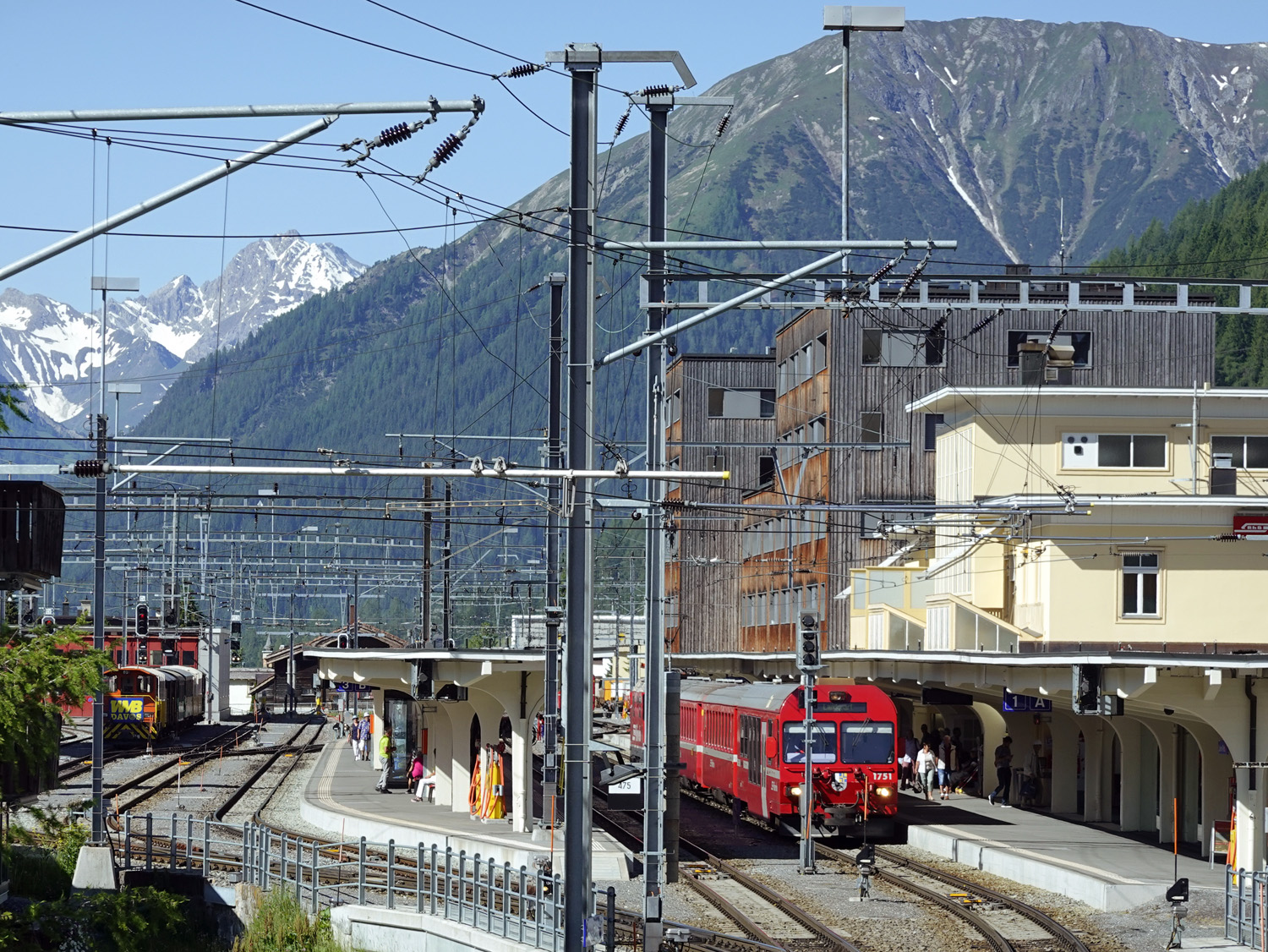 World politicians, business leaders, charities and pressure groups are meeting in Davos at the 2022 World Economic Forum. Normally this event takes place in January each year, but it was postponed to this May because of Covid-19 and is the first face-to-face meeting since January 2020.
World politicians, business leaders, charities and pressure groups are meeting in Davos at the 2022 World Economic Forum. Normally this event takes place in January each year, but it was postponed to this May because of Covid-19 and is the first face-to-face meeting since January 2020.
The meeting takes place amid a series of crises facing the world economy. The IMF’s Managing Director, Kristalina Georgieva, described the current situation as a ‘confluence of calamities’. Problems include:
- Continuing hangovers from Covid have caused economic difficulties in many countries.
- The bounceback from Covid has led to demand outpacing supply. The world is suffering from a range of supply-chain problems and shortages of key materials and components, such as computer chips.
- The war in Ukraine has not only caused suffering in Ukraine itself, but has led to huge energy and food price increases as a result of sanctions and the difficulties in exporting wheat, sunflower oil and other foodstuffs.
- Supply shocks have led to rising global inflation. This will feed into higher inflationary expectations, which will compound the problem if they result in higher prices and wages in response to higher costs.
- Central banks have responded by raising interest rates. These dampen an already weakened global economy and could push the world into recession.
- Global inequality is rising rapidly, both within countries and between countries, as Covid disruptions and higher food and energy prices hit the poor disproportionately. Poor people and countries also have a higher proportion of debt and are thus hit especially hard by higher interest rates.
- Global warming is having increasing effects, with a growing incidence of floods, droughts and hurricanes. These lead to crop failures and the displacement of people.
- Countries are increasingly resorting to trade restrictions as they seek to protect their own economies. These slow economic growth.
World leaders at Davos will be debating what can be done. One approach is to use fiscal policy. Indeed, Kristalina Georgieva said that her ‘main message is to recognise that the world must spend the billions necessary to contain Covid in order to gain trillions in output as a result’. But unless the increased expenditure is aimed specifically at tackling supply shortages and bottlenecks, it could simply add to rising inflation. Increasing aggregate demand in the context of supply shortages is not the solution.
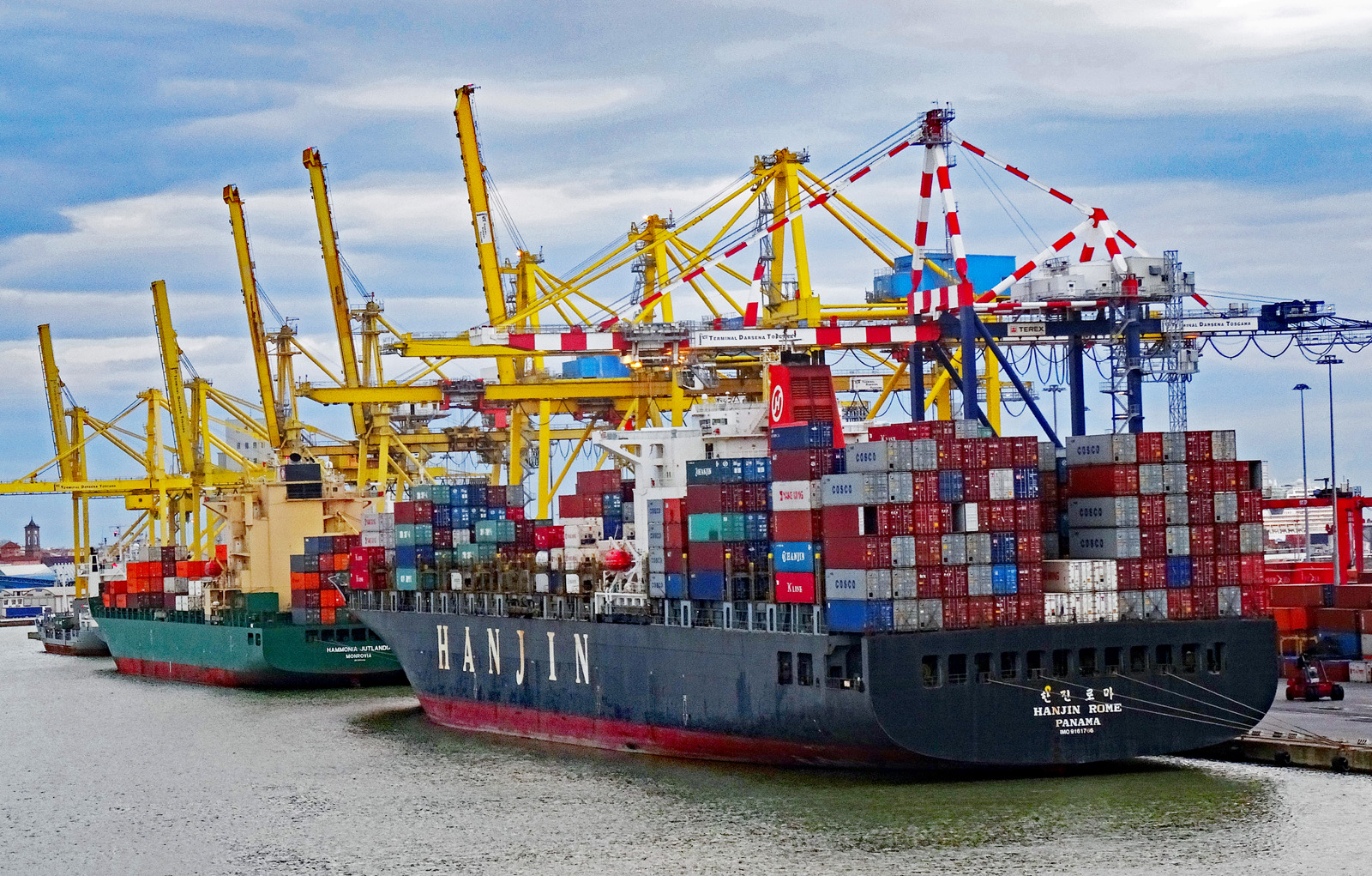 In the long run, supply bottlenecks can be overcome with appropriate investment. This may require both greater globalisation and greater localisation, with investment in supply chains that use both local and international sources.
In the long run, supply bottlenecks can be overcome with appropriate investment. This may require both greater globalisation and greater localisation, with investment in supply chains that use both local and international sources.
International sources can be widened with greater investment in manufacturing in some of the poorer developing countries. This would also help to tackle global inequality. Greater localisation for some inputs, especially heavier or more bulky ones, would help to reduce transport costs and the consumption of fuel.
With severe supply shocks, there are no simple solutions. With less supply, the world produces less and becomes poorer – at least temporarily until supply can increase again.
Articles
Discussion (video)
Report
Questions
- Draw an aggregate demand and supply diagram (AD/AS or DAD/DAS) to illustrate the effect of a supply shock on output and prices.
- Give some examples of supply-side policies that could help in the current situation.
- What are the arguments for and against countries using protectionist policies at the current time?
- What policies could countries adopt to alleviate rapid rises in the cost of living for people on low incomes? What problems do these policies pose?
- What are the arguments for and against imposing a windfall tax on energy companies and using the money to support poor people?
- If the world slips into recession, should central banks and governments use expansionary monetary and fiscal policies?
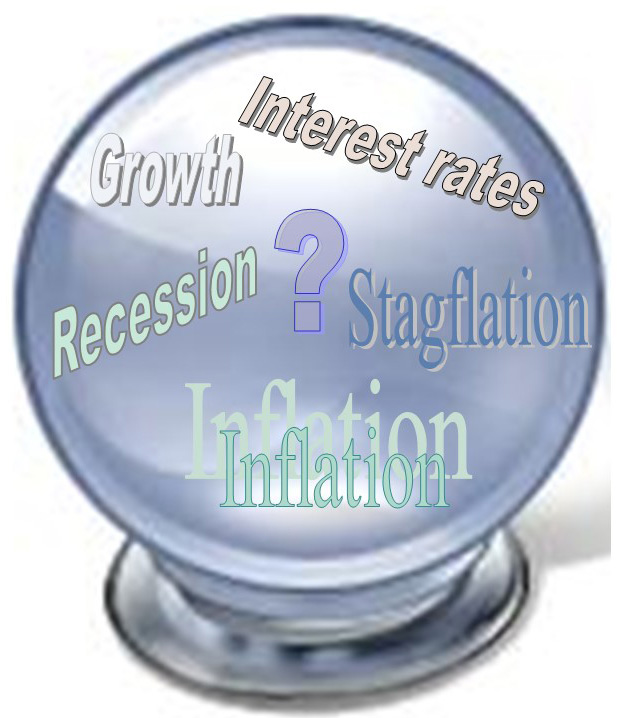 Inflation across the world has been rising. This has been caused by a rise in aggregate demand as the global economy has ‘bounced back’ from the pandemic, while supply-chain disruptions and tight labour markets constrain the ability of aggregate supply to respond to the rise in demand.
Inflation across the world has been rising. This has been caused by a rise in aggregate demand as the global economy has ‘bounced back’ from the pandemic, while supply-chain disruptions and tight labour markets constrain the ability of aggregate supply to respond to the rise in demand.
But what of the coming months? Will supply become more able to respond to demand as supply-chain issues ease, allowing further economic growth and an easing of inflationary pressures?
Or will higher inflation and higher taxes dampen real demand and cause growth, or even output, to fall? Are we about to enter an era of ‘stagflation’, where economies experience rising inflation and economic stagnation? And will stagnation be made worse by central banks which raise interest rates to dampen the inflation but, in the process, dampen spending.
Despite the worries of central banks, with inflation being higher than forecast a few months ago, forecasts (e.g. the OECD’s) are still for inflation to peak fairly soon and then to fall back to around 2 to 3 per cent by the beginning of 2023 – close to central bank target rates.
 In the UK, annual CPI inflation reached 5.4% in December 2021. The UK Treasury’s January 2022 new monthly forecasts for the UK economy by 15 independent institutions give an average forecast of 4.0% for CPI inflation for 2022. In the USA, annual consumer price inflation reached 7 per cent in December 2021, but is forecast to fall to just over the target rate of 2% by the end of 2022.
In the UK, annual CPI inflation reached 5.4% in December 2021. The UK Treasury’s January 2022 new monthly forecasts for the UK economy by 15 independent institutions give an average forecast of 4.0% for CPI inflation for 2022. In the USA, annual consumer price inflation reached 7 per cent in December 2021, but is forecast to fall to just over the target rate of 2% by the end of 2022.
If central banks respond to the current high inflation by raising interest rates more than very slightly and by stopping quantitative easing (QE), or even engaging in quantitative tightening (selling assets purchased under previous QE schemes), there is a severe risk of a sharp slowdown in economic activity. Household budgets are already being squeezed by the higher prices, especially energy and food prices. And people will face higher taxes as governments seek to reduce their debts, which soared with the Covid support packages during the pandemic.
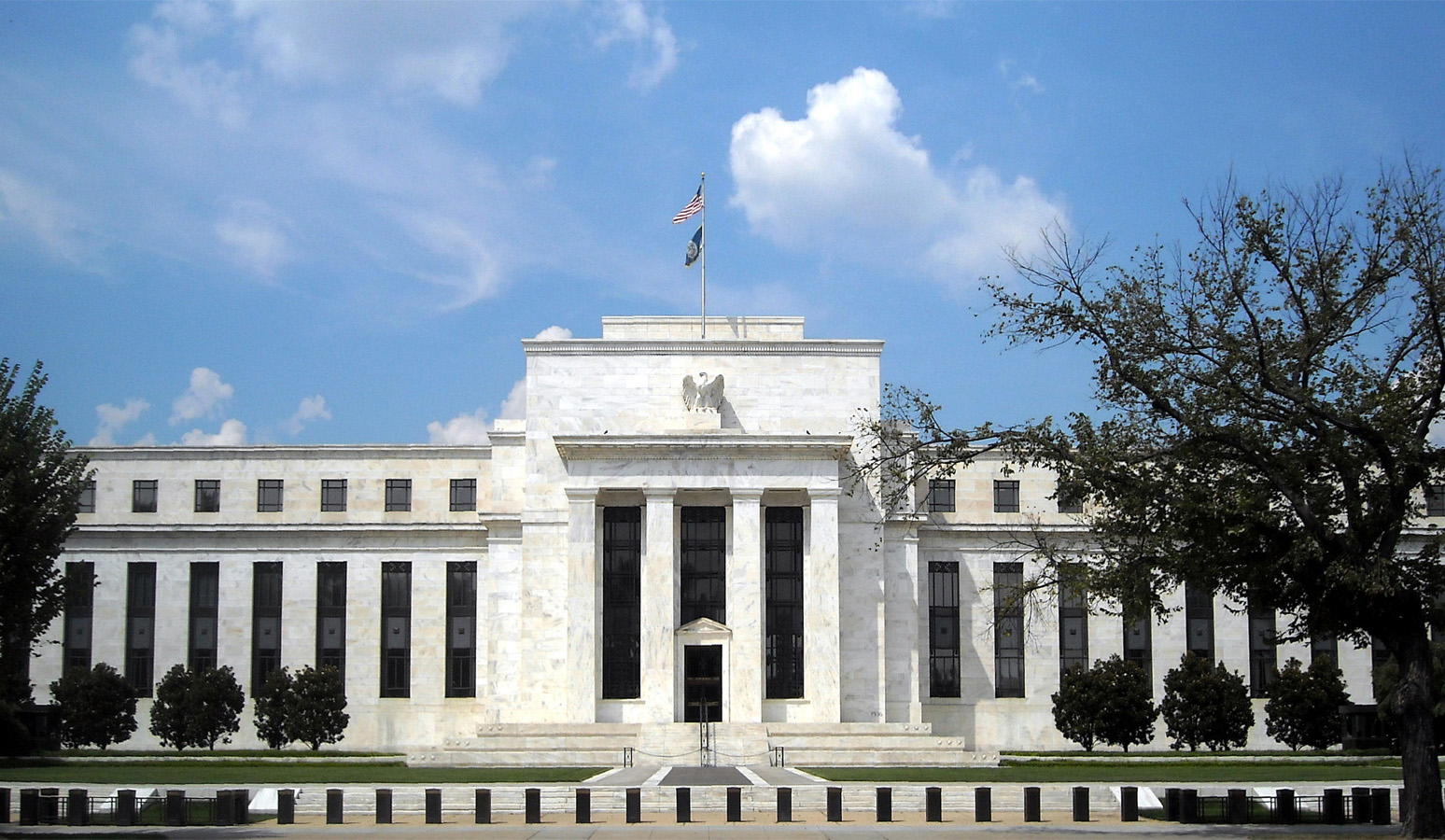 The Fed has signalled that it will end its bond buying (QE) programme in March 2022 and may well raise interest rates at the same time. Quantitative tightening may then follow. But although GDP growth is still strong in the USA, Fed policy and stretched household budgets could well see spending slow and growth fall. Stagflation is less likely in the USA than in the UK and many other countries, but there is still the danger of over-reaction by the Fed given the predicted fall in inflation.
The Fed has signalled that it will end its bond buying (QE) programme in March 2022 and may well raise interest rates at the same time. Quantitative tightening may then follow. But although GDP growth is still strong in the USA, Fed policy and stretched household budgets could well see spending slow and growth fall. Stagflation is less likely in the USA than in the UK and many other countries, but there is still the danger of over-reaction by the Fed given the predicted fall in inflation.
But there are reasons to be confident that stagflation can be avoided. Supply-chain bottlenecks are likely to ease and are already showing signs of doing so, with manufacturing production recovering and hold-ups at docks easing. The danger may increasingly become one of demand being excessively dampened rather than supply being constrained. Under these circumstances, inflation could rapidly fall, as is being forecast.
Nevertheless, as Covid restrictions ease, the hospitality and leisure sector is likely to see a resurgence in demand, despite stagnant or falling real disposable incomes, and here there are supply constraints in the form of staffing shortages. This could well lead to higher wages and prices in the sector, but probably not enough to prevent the fall in inflation.
Articles
- Inflation will probably melt away in 2022 – central banks will do far more harm trying to tackle it
The Conversation, Brigitte Granville (14/1/22)
- Stagflation and why it matters
The Week, Chas Newkey-Burden (1/10/21)
- Surging inflation could dwarf other issues in the political landscape as households feel the strain
Sky News, Ed Conway (19/1/22)
- Inflation is back, and there’s plenty more in the pipeline
The Guardian, Larry Elliott (19/1/22)
- UK inflation jumps to highest level in 30 years
Financial Times, Chris Giles (19/1/22)
- UK workers’ pay rises fall behind inflation amid cost-of-living crisis
The Guardian, Richard Partington (18/1/22)
- UK faces a pay squeeze – and higher interest rates look likely
The Guardian, Phillip Inman (18/1/22)
- Inflation: why it’s temporary and raising interest rates will do more harm than good
The Conversation, Muhammad Ali Nasir (22/11/21)
- Inflation: why it is the biggest test yet for central bank independence
The Conversation, Anton Muscatelli (14/12/21)
- Three more interest rate rises loom after Bank’s borrowing cost shock
The Telegraph, Russell Lynch and Tim Wallace (16/12/21)
- US Stagflation: The Global Risk Of 2022 – OpEd
Eurasia Review, Dan Steinbock (17/1/22)
- If prices keep rising, a nightmare scenario for the US economy is a real possibility
CNN, Paul R La Monica (12/1/22)
- Will inflation in the UK keep rising?
Bank of England (10/12/21)
Data
Questions
- Under what circumstances would stagflation be (a) more likely; (b) less likely?
- Find out the causes of stagflation in the early/mid-1970s.
- Argue the case for and against the Fed raising interest rates and ending its asset buying programme.
- Why are labour shortages likely to be higher in the UK than in many other countries?
- Research what is likely to happen to fuel prices over the next two years. How is this likely to impact on inflation and economic growth?
- Is the rise in prices likely to increase or decrease real wage inequality? Explain.
- Distinguish between cost-push and demand-pull inflation. Which of the two is more likely to result in stagflation?
- Why are inflationary expectations a major determinant of actual inflation? What influences inflationary expectations?
 The global battle for fuel is expected to peak this winter. The combination of rising demand and a tightening of supply has sparked concerns of shortages in the market. Some people are worried about another ‘winter of discontent’. Gas prices have risen fivefold in Europe as a whole.
The global battle for fuel is expected to peak this winter. The combination of rising demand and a tightening of supply has sparked concerns of shortages in the market. Some people are worried about another ‘winter of discontent’. Gas prices have risen fivefold in Europe as a whole.
In the UK, consumers are likely to find that the natural gas needed to heat their homes this October will cost at least five times more than it did a year ago. This surge in wholesale gas prices has seen several UK energy suppliers stop trading as they are unable to make a profit. This is because of an energy price cap for some consumers and various fixed price deals they had signed with their customers.
There are thus fears of an energy crisis in the UK, especially if there is a cold winter. There are even warnings that during a cold snap, gas supply to various energy-intensive firms may be cut off. This comes at a time when some of these industries are struggling to make a profit.
Demand and supply
The current situation is a combination of long- and short-term factors. In spring 2020, the demand for gas actually decreased due to the pandemic. This resulted in low gas prices, reduced UK production and delayed maintenance work and investment along global supply chains. However, since early 2021, consumer demand for gas has soared. First, there was an increased demand due to the Artic weather conditions last winter. This was then followed by heatwaves in the USA and Europe over the summer, which saw an increase in the use of air conditioning units. With the increased demand combined with calm weather conditions, wind turbines couldn’t supply enough power to meet demand.
 There has also been a longer-term impact on demand throughout the industry due to the move to cleaner energy. The transitioning to wind and solar has seen a medium-term increase in the demand for gas. There is also a long-term impact of the target for net zero economies in the UK and Europe. This has hindered investors’ willingness to invest in developing supplies of fossil fuels due the fact they could become obsolete over the next few decades.
There has also been a longer-term impact on demand throughout the industry due to the move to cleaner energy. The transitioning to wind and solar has seen a medium-term increase in the demand for gas. There is also a long-term impact of the target for net zero economies in the UK and Europe. This has hindered investors’ willingness to invest in developing supplies of fossil fuels due the fact they could become obsolete over the next few decades.
Nations have also been unable to build up enough supplies for winter. This is partly due to Europe’s domestic gas stocks having declined by 30% per cent in the past decade. This heightened situation is leading to concerns that there will be black-outs or cut-offs in gas this winter.
Importation of gas
 A concern for the UK is that it has scant storage facilities with no long-term storage. The UK currently has very modest amounts of storage – less than 6% of annual demand and some five times less than the average in the rest of Europe. It has been increasingly operating a ‘just-in-time model’, which is more affected by short-term price fluctuations in the wholesale gas market. With wind power generation remaining lower than average during summer 2021, more gas than usual has been used to generate electricity, leaving less gas to go into storage.
A concern for the UK is that it has scant storage facilities with no long-term storage. The UK currently has very modest amounts of storage – less than 6% of annual demand and some five times less than the average in the rest of Europe. It has been increasingly operating a ‘just-in-time model’, which is more affected by short-term price fluctuations in the wholesale gas market. With wind power generation remaining lower than average during summer 2021, more gas than usual has been used to generate electricity, leaving less gas to go into storage.
However, some argue that the problem is not just the UK’s physical supply of gas but demand for gas from elsewhere. Around half of the UK’s supply comes from its own production sites, while the rest is piped in from Europe or shipped in as liquefied natural gas (LNG) from the USA, Qatar and Russia. In 2019, the UK imported almost 20% of its gas through LNG shipments. However, Asian gas demand has grown rapidly, expanding by 50% over the past decade. This has meant that LNG has now become much harder to secure.
The issue is the price the UK has to pay to continue receiving these supplies. Some in the gas industry believe the price surge is only temporary, caused by economic disruptions, while many others say it highlights a structural weakness in a continent that has become too reliant on imported gas. It can be argued that the gas crisis has highlighted the lack of a coherent strategy to manage the gas industry as the UK transitions to a net zero economy. The lack of any industry investment in new capacity suggests that there is currently no business case for new long-term storage in the UK, especially as gas demand is expected to continue falling over the longer term.
Impact on consumers and industry
 Gas prices for suppliers have increased fivefold over the past year. Therefore, many companies face a considerable rise in their bills. MSome may need to reduce or pause production – or even cease trading – which could cause job losses. Alternatively, they could pass on their increased costs to customers by charging them higher prices. Although energy-intensive industries are particularly exposed, every company that has to pay energy bills will be affected. Due to the growing concerns about the security of winter gas supplies those industries reliant on gas, such as the fertiliser industry, are restricting production, threatening various supply chains.
Gas prices for suppliers have increased fivefold over the past year. Therefore, many companies face a considerable rise in their bills. MSome may need to reduce or pause production – or even cease trading – which could cause job losses. Alternatively, they could pass on their increased costs to customers by charging them higher prices. Although energy-intensive industries are particularly exposed, every company that has to pay energy bills will be affected. Due to the growing concerns about the security of winter gas supplies those industries reliant on gas, such as the fertiliser industry, are restricting production, threatening various supply chains.
Most big domestic gas suppliers buy their gas months in advance, meaning they will most likely pass on the higher price rises they have experienced in the past few months. The increased demand and decreased supply has already meant meant that customers have faced higher prices for their energy. The UK has been badly hit because it’s one of Europe’s biggest users of natural gas – 85% of homes use gas central heating – and it also generates a third of the country’s electricity.
The rising bills are particularly an issue for those customers on a variable tariff. About 15 million households have seen their energy bills rise by 12% since the beginning of October due to the rise in the government’s energy price cap calculated by the regulator, Ofgem. A major concern is that this increase in bills comes at a time when the need to use more heating and lighting is approaching. It also coincides with other price rises hitting family budgets and the withdrawal of COVID support schemes.
Government intervention – maximum pricing
If the government feels that the equilibrium price in a particular market is too high, it can intervene in the market and set a maximum price. When the government intervenes in this way, it sets a price ceiling on certain basic goods or services and does not permit the price to go above that set limit. A maximum price is normally set for reasons of fairness and to benefit consumers on low incomes. Examples include energy price caps to order to control fuel bills, rent controls in order to improve affordability of housing, a cap on mobile roaming charges within the EU and price capping for regional monopoly water companies.
The energy price cap
 Even without the prospect of a colder than normal winter, bills are still increasing. October’s increase in the fuel cap means that many annual household fuel bills will rise by £135 or more. The price cap sets the maximum price that suppliers in England, Wales and Scotland can charge domestic customers on a standard, or default tariff. The cap has come under the spotlight owing to the crisis among suppliers, which has seen eleven firms fold, with more expected.
Even without the prospect of a colder than normal winter, bills are still increasing. October’s increase in the fuel cap means that many annual household fuel bills will rise by £135 or more. The price cap sets the maximum price that suppliers in England, Wales and Scotland can charge domestic customers on a standard, or default tariff. The cap has come under the spotlight owing to the crisis among suppliers, which has seen eleven firms fold, with more expected.
The regulator Ofgem sets a price cap for domestic energy twice a year. The latest level came into place on 1 October. It is a cap on the price of energy that suppliers can charge. The price cap is based on a broad estimate of how much it costs a supplier to provide gas and electricity services to a customer. The calculation is mainly made up of wholesale energy costs, network costs such as maintaining pipes and wires, policy costs including Government social and environmental schemes, operating costs such as billing and metering services and VAT. Therefore, suppliers can only pass on legitimate costs of supplying energy and cannot charge more than the level of the price cap, although they can charge less. A household’s total bill is still determined by how much gas and electricity is used.
- Those on standard tariffs, with typical household levels of energy use, will see an increase of £139.
- People with prepayment meters, with average energy use, will see an annual increase of £153.
- Households on fixed tariffs will be unaffected. However, those coming to the end of a contract are automatically moved to a default tariff set at the new level.
Ordinarily, customers are able to shop around for cheaper deals, but currently, the high wholesale prices of gas means that cheaper deals are not available.
Despite the cap limiting how much providers can raise prices, the current increase is the biggest (and to the highest amount) since the cap was introduced in January 2019. As providers are scarcely making a profit on gas, there are concerns that a further increase in wholesale prices will cause more suppliers to be forced out of business. Ofgem said that the cap is likely to go up again in April, the next time it is reviewed.
Conclusion
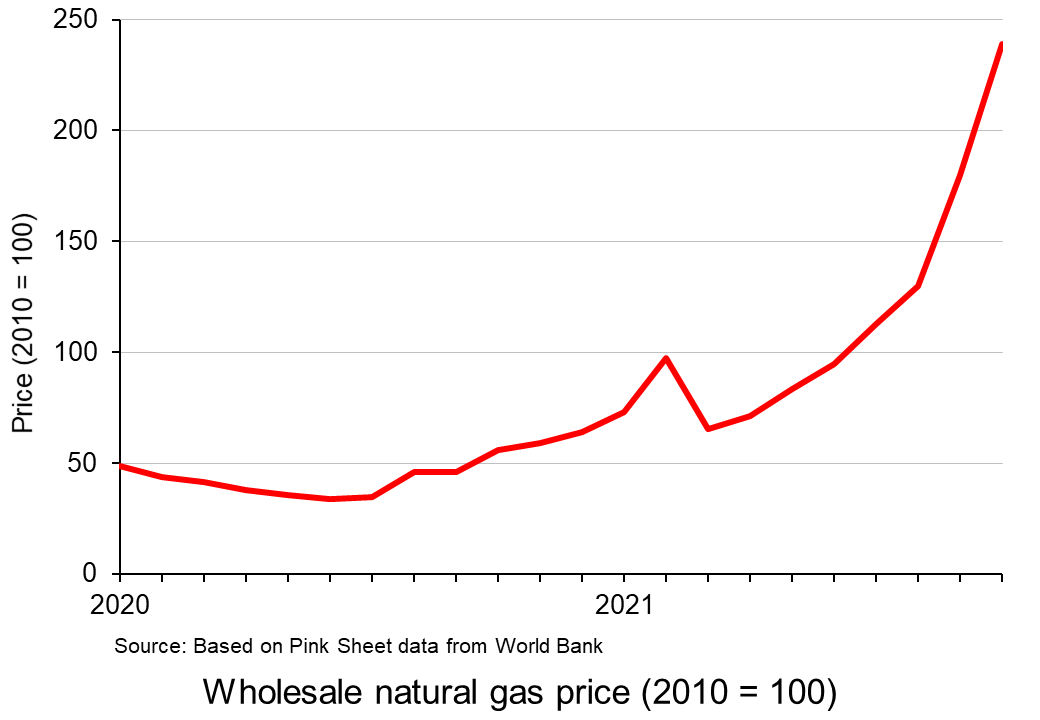 The record prices being paid by suppliers and deficits in gas supply across the world have stoked fears that the energy crisis will get worse. It comes at a time when households are already facing rising bills, while some energy-intensive industries have started to slow production. This has started to dent optimism around the post-pandemic economic recovery.
The record prices being paid by suppliers and deficits in gas supply across the world have stoked fears that the energy crisis will get worse. It comes at a time when households are already facing rising bills, while some energy-intensive industries have started to slow production. This has started to dent optimism around the post-pandemic economic recovery.
Historically, UK governments have trusted market mechanisms to deliver UK gas security. However, consumers are having to pay the cost of such an approach. The price cap has meant the UK’s gas bills have until now been typically lower than the EU average. However, the rise in prices comes on top of other economic problems such as labour shortages and increasing food prices, adding up to an unwelcome rise in the cost of living.
Video
Articles
UK government/Ofgem
Questions
- Using a supply and demand diagram, illustrate what has happened in the energy market over the past year.
- What are the advantages and disadvantages of government intervention in a free market?
- Explain why it is necessary for the regulator to intervene in the energy market.
- Using the concept of maximum pricing, illustrate how the price cap works.
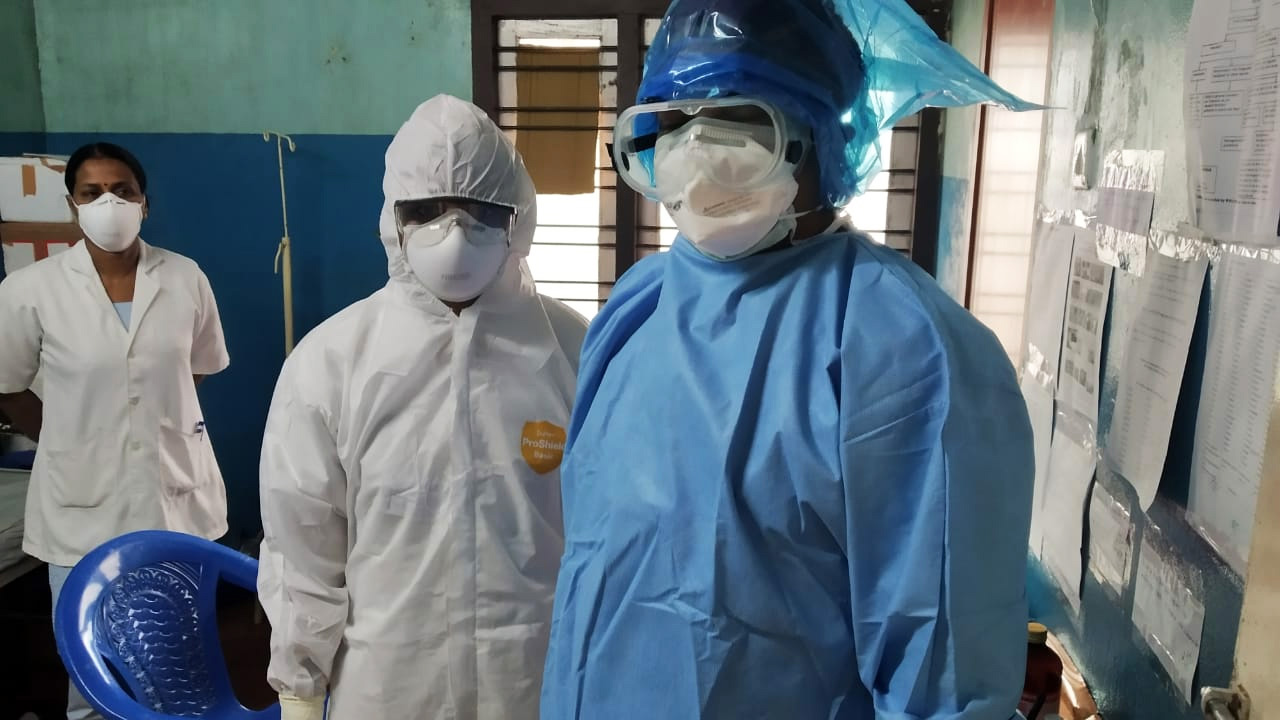 Throughout the pandemic, the fight against COVID-19 has often been framed in terms of striking a balance between the health of the public and the health of the economy. This leads to the assumption that a trade-off must exist between these two objectives. Countries, therefore, have to decide between lives and livelihoods. However, one year on since lockdowns swept the globe the evidence suggests that the trade-off between sacrificing lives and sacrificing the economy is not necessarily clear cut.
Throughout the pandemic, the fight against COVID-19 has often been framed in terms of striking a balance between the health of the public and the health of the economy. This leads to the assumption that a trade-off must exist between these two objectives. Countries, therefore, have to decide between lives and livelihoods. However, one year on since lockdowns swept the globe the evidence suggests that the trade-off between sacrificing lives and sacrificing the economy is not necessarily clear cut.
Controlling the virus
Restrictions such as social distancing and lockdowns were introduced in order to minimise the spread of the virus, prevent hospitals from being overwhelmed, and ultimately save lives. However, as these measures are put in place, schools were closed, businesses and factories stopped operating, and economic activity shrank. This would suggest therefore, that society inevitably faces a trade-off between lost lives versus lost livelihoods.
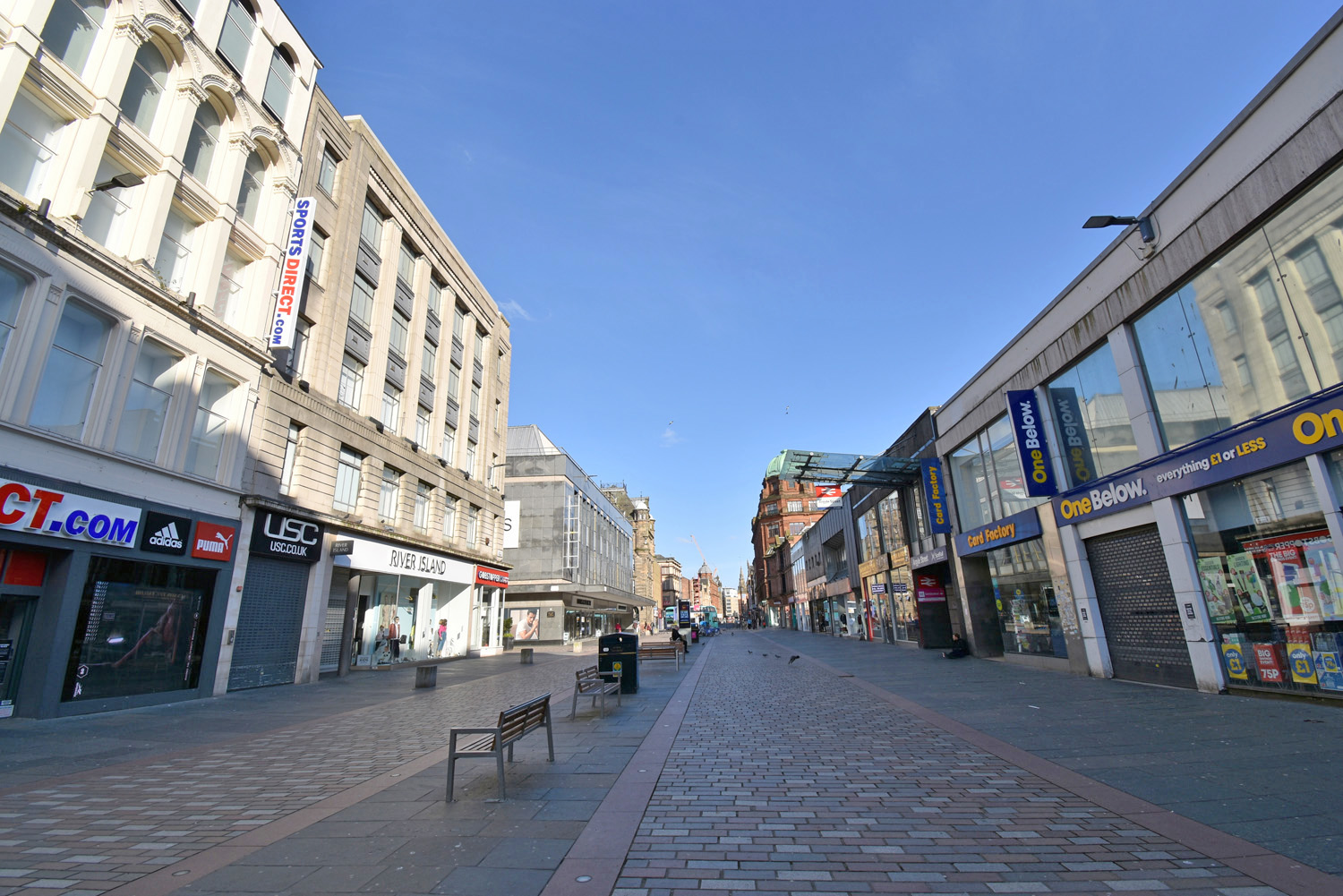 It could be argued, therefore, that in the short run these interventions create a ‘health–wealth trade-off’. The lockdown restrictions save lives by preventing transmission, but they came at the cost of lost output, income and therefore GDP. This would also imply that the trade-off works in reverse when the lockdown restrictions are eased. As measures are relaxed, the economy can begin to recover but at the cost of an increased threat of the virus spreading again.
It could be argued, therefore, that in the short run these interventions create a ‘health–wealth trade-off’. The lockdown restrictions save lives by preventing transmission, but they came at the cost of lost output, income and therefore GDP. This would also imply that the trade-off works in reverse when the lockdown restrictions are eased. As measures are relaxed, the economy can begin to recover but at the cost of an increased threat of the virus spreading again.
What are the costs?
In order to work out if a trade-off exists and what costs are involved, there must be a monetary value placed on human life. While this may seem unethical, governments, civil courts, regulatory bodies and companies do it all the time. The very existence of the life insurance industry is testament to the fact that human lives can be measured in monetary terms. One approach to measuring valuing life, commonly used by economists who conduct cost-benefit analyses, is the ‘value of statistical life’. It measures the loss or gain that arises from changes in the incidence of death, by eliciting people’s willingness to pay for small reductions in the probability of death, or their willingness to accept compensation in exchange for tolerating a small increase in the chance of death. (see the blog Lockdown – again. Is it worth it?)
Take the example of a complete lockdown. The potential number of lives saved can be estimated based on infection and fatality rates estimated from epidemiological models. This can then be multiplied by value of statistical life to compute the monetary value of saved lives. If this number exceeds the economic costs of a complete lockdown, then we know that it is desirable.
The trade-off between lost lives versus the economy is often erroneously viewed as an all-or-nothing choice between complete lockdown versus zero restrictions. However, in reality, there is a continuum in stringency of restrictions and it is not an all-or-nothing comparison.
Death rates vs downturns
In order to explore the existence of this trade-off, we can compare the health and economic impacts of the pandemic in different countries. If such a trade-off exists, then countries with lower death rates should have experienced larger economic downturns. However, when comparing the COVID-19 death rates with GDP data, the result is the opposite: countries that have managed to protect their population’s health in the pandemic have generally also protected their economy too. This suggests that there was never a simple binary trade-off between the two factors. Those countries that experienced the biggest first wave of excess deaths, also had the biggest hits to the economy.
 The UK was the hardest hit of similar countries on both measures within the G7 group of industrialised countries. The shape of the recession in the UK from the pandemic and lockdowns was extraordinary and historic. However, it was also unique as there was a very sharp fall followed by a rapid rebound. Over 2020, GDP saw the largest hit in three centuries; larger than any single year of the Great Wars or the 1920s Depression.
The UK was the hardest hit of similar countries on both measures within the G7 group of industrialised countries. The shape of the recession in the UK from the pandemic and lockdowns was extraordinary and historic. However, it was also unique as there was a very sharp fall followed by a rapid rebound. Over 2020, GDP saw the largest hit in three centuries; larger than any single year of the Great Wars or the 1920s Depression.
Studies of the declines in GDP contradict the idea of a trade-off, showing that countries that suffered the most severe economic downturns, such as Peru, Spain and the UK, were generally among the countries with the highest COVID-19 death rates. There are countries that have experienced the reverse too; Taiwan, South Korea, and Lithuania all experienced modest declines in economic output but have also managed to keep the death rate low.
It should also be noted that some countries that had similar falls in GDP experienced very different death rates from each other. When comparing the USA and Sweden with Denmark and Poland, they all saw similar declines in the economy with contractions of around 8–9%. However, the USA and Sweden recorded 5–10 times more deaths per million. This therefore suggests that there is no clear trade-off between the health of the population and the health of the economy.
There will be many different factors that impact on the death rate for each individual country and by how much the economy has been affected. Such factors will even go beyond the policy decisions that have been made throughout the pandemic about how best to suppress the transmission of the virus. However, from the data available, there is no clear evidence to suggest that a trade-off between the health and the economy exists. If anything, it suggests that the relationship works in the opposite direction.
Save the economy by saving lives
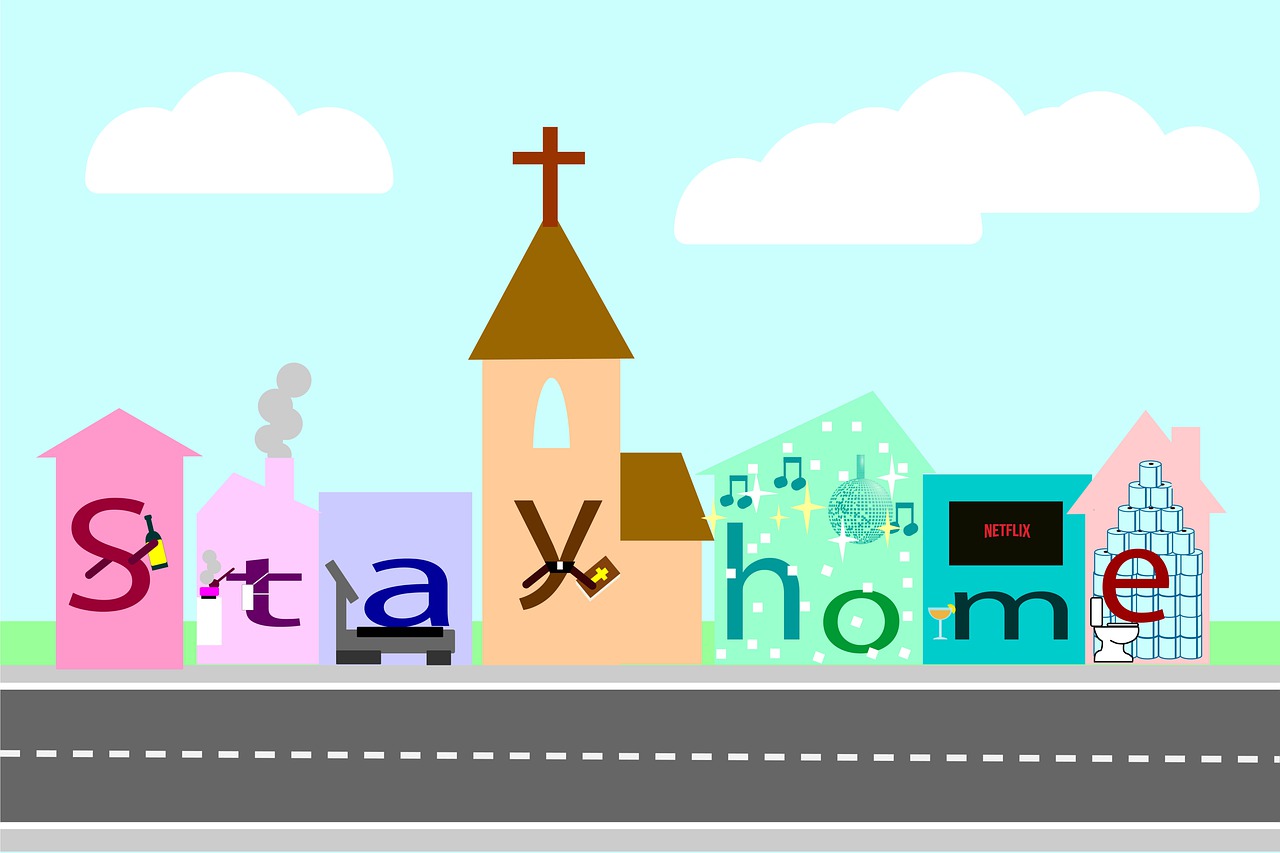 Given the arguments against the existence of the trade-off, it could be argued that in order to limit the economic damage caused by the pandemic, the focus needs to start and end with controlling the spread of the virus. Experiments that have been conducted across the world definitively show that no country can prevent the economic damage without first addressing the pandemic that causes it. Those countries that acted swiftly in implementing harsh measures to control the virus, are now reopening in stages and their economies are growing. Countries such as China, Australia, New Zealand, Iceland, and Singapore, which all invested primarily in swift coronavirus suppression, have effectively eliminated the virus and are seeing their economies begin to grow again.
Given the arguments against the existence of the trade-off, it could be argued that in order to limit the economic damage caused by the pandemic, the focus needs to start and end with controlling the spread of the virus. Experiments that have been conducted across the world definitively show that no country can prevent the economic damage without first addressing the pandemic that causes it. Those countries that acted swiftly in implementing harsh measures to control the virus, are now reopening in stages and their economies are growing. Countries such as China, Australia, New Zealand, Iceland, and Singapore, which all invested primarily in swift coronavirus suppression, have effectively eliminated the virus and are seeing their economies begin to grow again.
China, in particular, stands out amongst this group of countries. The Chinese authorities acted very quickly, and firmly, but also the levels of compliance of the population have been very high. However, it could be argued that few countries possess the infrastructure that exists in China to facilitate such high compliance. The fact that the lockdown in China was so effective reduced both losses to the economy and the need for stimulus measures. China is also one of the few countries that have achieved a “V-shaped” recovery. Countries such as Korea, Norway and Finland also appear to have responded relatively well.
Most of the countries that prioritised supporting their economies and resisted, limited, or prematurely curtailed interventions to control the pandemic faced runaway rates of infection and further national lockdowns. The examples of the UK, the USA and Brazil are often quoted, with many arguing that these countries responded too late and too haphazardly. Both have experienced high numbers of deaths.
Conclusion
Discussions around the responses to the pandemic and what appropriate action should be taken have predominately been about how countries can strike the balance between protecting people’s health and protecting the economy. However, from observing the GDP data available there is no clear evidence of a definitive trade-off; rather the relationship between the health and economic impacts of the pandemic goes in the opposite direction. As well as saving lives, countries controlling the outbreak effectively may have adopted the best economic strategy too. It is important to recognise that many factors have affected the death rate and the impact on the economy, and the full impacts of the pandemic are yet to be seen. However, it is by no means clear that the trade-off between greater emphasis on sacrificing lives or sacrificing the economy is as real as has been suggested. If such a trade-off does exist, it is, at best, a weak one.
Articles
- In a pandemic it isn’t a case of health v wealth
BBC News, Faisal Islam (17/3/21)
- To Save the Economy, Save People First
Institute for New Economics Thinking, Phillip Alvelda, Thomas Ferguson, and John C. Mallery (18/11/20)
- Covid-19: Is there a trade-off between economic damage and loss of life?
LSE Blogs, Bernard H Casey (18/12/20)
- The COVID-19 dilemma: Public health versus the economy
Asian Development Bank Blogs, Euston Quah, Eik Leong Swee and Donghyun Park (24/11/20)
- Valuating health vs wealth: The effect of information and how this matters for COVID-19 policymaking
VOXEU, Shaun P. Hargreaves Heap, Christel Koop, Konstantinos Matakos, Asli Unan, Nina Weber (6/6/20)
- Which countries have protected both health and the economy in the pandemic?
Our World in Data, Joe Hasell (1/9/20)
Questions
- Define and explain the difference between a substitute and complementary good.
- Using your answer to question 1, describe the existence of a trade-off.
- Discuss the reasons why the trade-off between health and the economy would work in the opposite direction.

 This effect of an adverse supply shock accompanied by relatively buoyant aggregate demand (at least initially) can be illustrated with an aggregate demand and supply diagram. The supply shock is illustrated by an upward shift to the left of the short-run aggregate supply curve (SRAS). (If the shock is a direct rise in prices, then it can be seen as a vertical upward shift. If it is a fall in the total amount supplied, then it can be seen as a horizontal leftward shift.) In the diagram, aggregate supply shifts from SRAS1 to SRAS2. The price level rises from P1 to P2. If costs go on rising or supply goes on falling then the curve will go on shifting upwards to the left.
This effect of an adverse supply shock accompanied by relatively buoyant aggregate demand (at least initially) can be illustrated with an aggregate demand and supply diagram. The supply shock is illustrated by an upward shift to the left of the short-run aggregate supply curve (SRAS). (If the shock is a direct rise in prices, then it can be seen as a vertical upward shift. If it is a fall in the total amount supplied, then it can be seen as a horizontal leftward shift.) In the diagram, aggregate supply shifts from SRAS1 to SRAS2. The price level rises from P1 to P2. If costs go on rising or supply goes on falling then the curve will go on shifting upwards to the left. The war in Ukraine. This has had a major impact on the supply of natural gas and oil. The war has also led to a fall in grain and other food supplies from Ukraine, as ports have been blockaded and there have been disruptions to planting and harvesting.
The war in Ukraine. This has had a major impact on the supply of natural gas and oil. The war has also led to a fall in grain and other food supplies from Ukraine, as ports have been blockaded and there have been disruptions to planting and harvesting. Central banks generally have a mandate of keeping inflation close to 2% over the medium term. Their levers are changes in interest rates, underpinned by changes in the money supply – in extreme times by quantitative easing (creating money by buying assets with newly created money) or quantitative tightening (withdrawing money from the economy by selling assets). Central banks, faced by soaring inflation, have been raising interest rates. The Fed has recently raised the Federal Funds rate by 0.75 percentage points (75 basis points) and the Bank of England and the European Central Bank by 0.5 percentage points (50 basis points).
Central banks generally have a mandate of keeping inflation close to 2% over the medium term. Their levers are changes in interest rates, underpinned by changes in the money supply – in extreme times by quantitative easing (creating money by buying assets with newly created money) or quantitative tightening (withdrawing money from the economy by selling assets). Central banks, faced by soaring inflation, have been raising interest rates. The Fed has recently raised the Federal Funds rate by 0.75 percentage points (75 basis points) and the Bank of England and the European Central Bank by 0.5 percentage points (50 basis points). Relief for consumers can be in various forms. For example, the government could pay subsidies to energy suppliers to cap prices at a lower level, perhaps just for the poorest households. Or it could pay grants to help people with their bills. Again, these could be targeted to the poorest families, or paid on a sliding scale according to income. Or VAT on gas and electricity could be scrapped.
Relief for consumers can be in various forms. For example, the government could pay subsidies to energy suppliers to cap prices at a lower level, perhaps just for the poorest households. Or it could pay grants to help people with their bills. Again, these could be targeted to the poorest families, or paid on a sliding scale according to income. Or VAT on gas and electricity could be scrapped. July 26-27, 2022 FOMC Meeting, Chair Powell’s Press Conference
July 26-27, 2022 FOMC Meeting, Chair Powell’s Press Conference July 26-27, 2022 FOMC Meeting, Chair Powell’s Press Conference
July 26-27, 2022 FOMC Meeting, Chair Powell’s Press Conference World politicians, business leaders, charities and pressure groups are meeting in Davos at the
World politicians, business leaders, charities and pressure groups are meeting in Davos at the  In the long run, supply bottlenecks can be overcome with appropriate investment. This may require both greater globalisation and greater localisation, with investment in supply chains that use both local and international sources.
In the long run, supply bottlenecks can be overcome with appropriate investment. This may require both greater globalisation and greater localisation, with investment in supply chains that use both local and international sources.  Inflation across the world has been rising. This has been caused by a rise in aggregate demand as the global economy has ‘bounced back’ from the pandemic, while supply-chain disruptions and tight labour markets constrain the ability of aggregate supply to respond to the rise in demand.
Inflation across the world has been rising. This has been caused by a rise in aggregate demand as the global economy has ‘bounced back’ from the pandemic, while supply-chain disruptions and tight labour markets constrain the ability of aggregate supply to respond to the rise in demand.  In the UK, annual CPI inflation
In the UK, annual CPI inflation  The Fed has signalled that it will end its bond buying (QE) programme in March 2022 and may well raise interest rates at the same time. Quantitative tightening may then follow. But although GDP growth is still strong in the USA, Fed policy and stretched household budgets could well see spending slow and growth fall. Stagflation is less likely in the USA than in the UK and many other countries, but there is still the danger of over-reaction by the Fed given the predicted fall in inflation.
The Fed has signalled that it will end its bond buying (QE) programme in March 2022 and may well raise interest rates at the same time. Quantitative tightening may then follow. But although GDP growth is still strong in the USA, Fed policy and stretched household budgets could well see spending slow and growth fall. Stagflation is less likely in the USA than in the UK and many other countries, but there is still the danger of over-reaction by the Fed given the predicted fall in inflation. The global battle for fuel is expected to peak this winter. The combination of rising demand and a tightening of supply has sparked concerns of shortages in the market. Some people are worried about another ‘winter of discontent’. Gas prices have risen fivefold in Europe as a whole.
The global battle for fuel is expected to peak this winter. The combination of rising demand and a tightening of supply has sparked concerns of shortages in the market. Some people are worried about another ‘winter of discontent’. Gas prices have risen fivefold in Europe as a whole.  There has also been a longer-term impact on demand throughout the industry due to the move to cleaner energy. The transitioning to wind and solar has seen a medium-term increase in the demand for gas. There is also a long-term impact of the target for net zero economies in the UK and Europe. This has hindered investors’ willingness to invest in developing supplies of fossil fuels due the fact they could become obsolete over the next few decades.
There has also been a longer-term impact on demand throughout the industry due to the move to cleaner energy. The transitioning to wind and solar has seen a medium-term increase in the demand for gas. There is also a long-term impact of the target for net zero economies in the UK and Europe. This has hindered investors’ willingness to invest in developing supplies of fossil fuels due the fact they could become obsolete over the next few decades.  A concern for the UK is that it has scant storage facilities with no long-term storage. The UK currently has very modest amounts of storage – less than 6% of annual demand and some five times less than the average in the rest of Europe. It has been increasingly operating a ‘
A concern for the UK is that it has scant storage facilities with no long-term storage. The UK currently has very modest amounts of storage – less than 6% of annual demand and some five times less than the average in the rest of Europe. It has been increasingly operating a ‘ Even without the prospect of a colder than normal winter, bills are still increasing. October’s increase in the fuel cap means that many annual household fuel bills will rise by £135 or more. The price cap sets the maximum price that suppliers in England, Wales and Scotland can charge domestic customers on a standard, or default tariff. The cap has come under the spotlight owing to the crisis among suppliers, which has seen eleven firms fold, with more expected.
Even without the prospect of a colder than normal winter, bills are still increasing. October’s increase in the fuel cap means that many annual household fuel bills will rise by £135 or more. The price cap sets the maximum price that suppliers in England, Wales and Scotland can charge domestic customers on a standard, or default tariff. The cap has come under the spotlight owing to the crisis among suppliers, which has seen eleven firms fold, with more expected. The record prices being paid by suppliers and deficits in gas supply across the world have stoked fears that the energy crisis will get worse. It comes at a time when households are already facing rising bills, while some energy-intensive industries have started to slow production. This has started to dent optimism around the post-pandemic economic recovery.
The record prices being paid by suppliers and deficits in gas supply across the world have stoked fears that the energy crisis will get worse. It comes at a time when households are already facing rising bills, while some energy-intensive industries have started to slow production. This has started to dent optimism around the post-pandemic economic recovery.  Throughout the pandemic, the fight against COVID-19 has often been framed in terms of striking a balance between the health of the public and the health of the economy. This leads to the assumption that a trade-off must exist between these two objectives. Countries, therefore, have to decide between lives and livelihoods. However, one year on since lockdowns swept the globe the evidence suggests that the trade-off between sacrificing lives and sacrificing the economy is not necessarily clear cut.
Throughout the pandemic, the fight against COVID-19 has often been framed in terms of striking a balance between the health of the public and the health of the economy. This leads to the assumption that a trade-off must exist between these two objectives. Countries, therefore, have to decide between lives and livelihoods. However, one year on since lockdowns swept the globe the evidence suggests that the trade-off between sacrificing lives and sacrificing the economy is not necessarily clear cut. It could be argued, therefore, that in the short run these interventions create a ‘health–wealth trade-off’. The lockdown restrictions save lives by preventing transmission, but they came at the cost of lost output, income and therefore GDP. This would also imply that the trade-off works in reverse when the lockdown restrictions are eased. As measures are relaxed, the economy can begin to recover but at the cost of an increased threat of the virus spreading again.
It could be argued, therefore, that in the short run these interventions create a ‘health–wealth trade-off’. The lockdown restrictions save lives by preventing transmission, but they came at the cost of lost output, income and therefore GDP. This would also imply that the trade-off works in reverse when the lockdown restrictions are eased. As measures are relaxed, the economy can begin to recover but at the cost of an increased threat of the virus spreading again.  The UK was the hardest hit of similar countries on both measures within the G7 group of industrialised countries. The shape of the recession in the UK from the pandemic and lockdowns was extraordinary and historic. However, it was also unique as there was a very sharp fall followed by a rapid rebound. Over 2020, GDP saw the largest hit in three centuries; larger than any single year of the Great Wars or the 1920s Depression.
The UK was the hardest hit of similar countries on both measures within the G7 group of industrialised countries. The shape of the recession in the UK from the pandemic and lockdowns was extraordinary and historic. However, it was also unique as there was a very sharp fall followed by a rapid rebound. Over 2020, GDP saw the largest hit in three centuries; larger than any single year of the Great Wars or the 1920s Depression. Given the arguments against the existence of the trade-off, it could be argued that in order to limit the economic damage caused by the pandemic, the focus needs to start and end with controlling the spread of the virus. Experiments that have been conducted across the world definitively show that no country can prevent the economic damage without first addressing the pandemic that causes it. Those countries that acted swiftly in implementing harsh measures to control the virus, are now reopening in stages and their economies are growing. Countries such as China, Australia, New Zealand, Iceland, and Singapore, which all invested primarily in swift coronavirus suppression, have effectively eliminated the virus and are seeing their economies begin to grow again.
Given the arguments against the existence of the trade-off, it could be argued that in order to limit the economic damage caused by the pandemic, the focus needs to start and end with controlling the spread of the virus. Experiments that have been conducted across the world definitively show that no country can prevent the economic damage without first addressing the pandemic that causes it. Those countries that acted swiftly in implementing harsh measures to control the virus, are now reopening in stages and their economies are growing. Countries such as China, Australia, New Zealand, Iceland, and Singapore, which all invested primarily in swift coronavirus suppression, have effectively eliminated the virus and are seeing their economies begin to grow again.